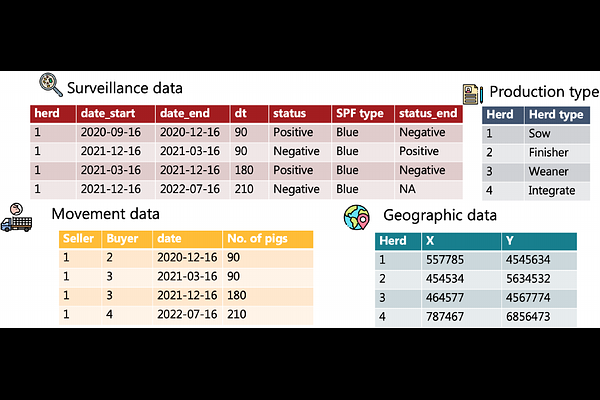Modelling PRRS transmission between pig herds in Denmark and prediction of interventions impact

Modelling PRRS transmission between pig herds in Denmark and prediction of interventions impact
Chang, Y.; Marques, A. R.; Fertner, M.; Toft, N.; Lorenzen, B.; Reimert, M. M.; Houe, H.; Conrady, B.
AbstractPorcine reproductive and respiratory syndrome (PRRS) is an endemic viral disease in most pig-producing countries, including Denmark. In 2022, Denmark launched a control program to reduce PRRS prevalence, with legislative changes in 2023 making testing and status reporting mandatory. The program also enforces the loss of PRRS-free status for farms that purchase pigs from non-PRRS-free sources and implements region-specific control measures to coordinate PRRS elimination within herds. However, the effectiveness of these interventions remains uncertain and requires thorough evaluation through transmission modelling and analysis of data before and after legislation changes. To understand PRRS transmission prior to legislative changes in 2023 and predict the impact of control measures, we developed a between-herd stochastic compartmental model. This model includes compartments for susceptible (S), highly infectious (Ih), lowly infectious (Il) and detected (D) pig herds, using data from 2020-2021. The model (i) quantifies the relative contributions of pig movements and local transmission to the spread of PRRS; (ii) generate herd-level maps of the basic reproduction (R0); and (iii) assess the effectiveness of targeted interventions for eradicating PRRS in Denmark. Model results indicated that more than 50% of herds had an R_0 greater than 1, suggesting a potential for sustained transmission if no interventions had been implemented after 2022. Both local spread and movement-mediated transmission play important roles, but local transmission drives the spatial heterogeneity in observed PRRS prevalence across Denmark. Although only 17% of infectious herds remain undetected under current surveillance, they are responsible for 60% of total transmission. Local control via depopulation and repopulation, is the fastest measure to reduce the observed prevalence of PRRS, but it has a lower effect on true transmission due to the hidden infections. Therefore, achieving eradication may require a combination of more frequent testing, targeted within-herd PRRS elimination and stricter risk-based trading. This study identifies PRRS hotspots and transmission routes, offering evidence-based recommendations for control.